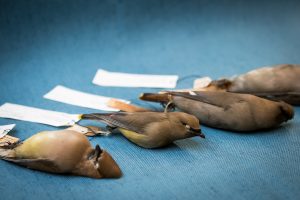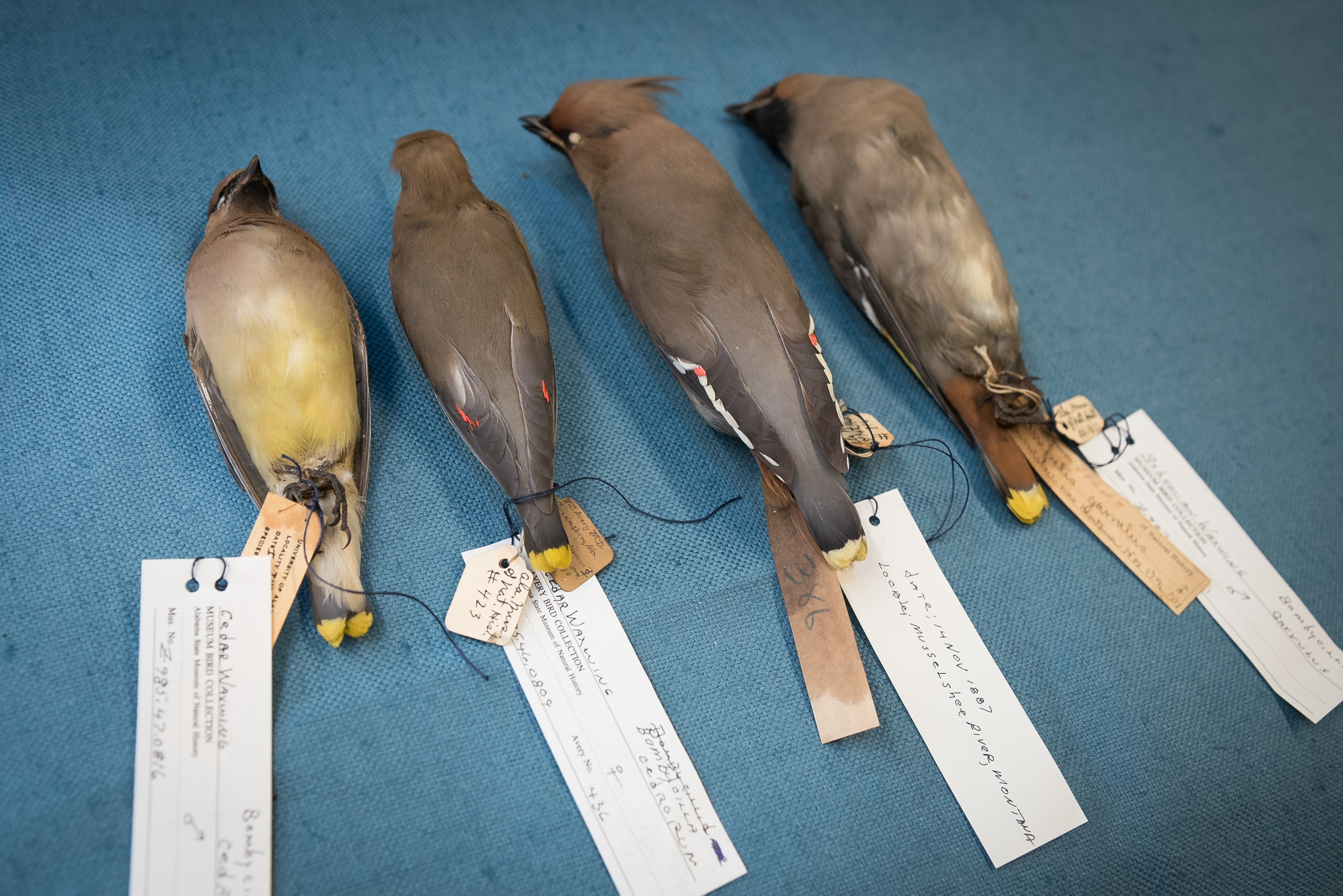
These delightful nomadic birds can be observed in large flocks during winter right here on The University of Alabama campus. Listen for their soft, buzzy trill as they scout for berries to feed on during the short colder months. One of our most beautiful native species, the Cedar Waxwing, Bombycilla cedrorum, is named for its sleek, silky feathers and arboreal breeding habitat. Even the scientific name invokes a bird of jaunty demeanor and decorum.
The Bohemian Waxwing, Bombycilla garrulous, is a bird of the northern climes, but will venture southward when food is scarce; individuals may even travel with large flocks of Cedar Waxwings, if necessary. Like their Cedar cousins, the Bohemians travel in nomadic flocks searching for berries in winter and can be differentiated by their size and color. Bohemians do not usually come this far south, but there is the off chance that one may appear with a flock of Cedars.
Both Cedars and Bohemians have the red waxy wing tips that give them their common name. Cedars are slimmer and smaller and have a bright yellow belly, where Bohemians are chunky with a grey belly and a rusty red vent beneath the tail. Dr. William Avery, who compiled the bulk of the bird collection for the Natural History Museum in the 1890s, acquired two specimens of Bohemian Waxwings from Montana. The Cedars he collected himself in his hometown of Greensboro.
The Vertebrate Zoology Collection is a result of research efforts in Alabama that span almost 110 years. In the mid- to late-1800s the first collections were begun from south central Alabama by Avery. The collection includes more than 3,000 mammal skins and skulls, including nine orders and 22 families of the known 67 species found in Alabama mammals. The collection is housed in the Mary Harmon Bryant Collections Facility.
Mary Beth Prondzinski, natural history collections manager for The University of Alabama Museums, provided the above information.
